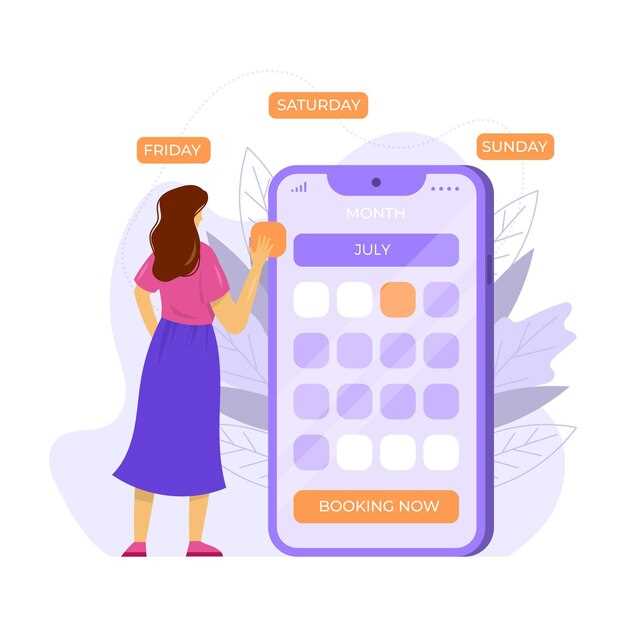
Find relief from Seroquel dependence with our carefully crafted withdrawal schedule. If you’re ready to take control of your journey towards a medication-free life, we’re here to support you every step of the way.
Under the guidance of our experienced professionals, we’ll create a personalized plan that caters to your specific needs and ensures a safe and comfortable transition. Our comprehensive schedule includes gradual dose reduction, targeted therapies, and ongoing monitoring to minimize withdrawal symptoms.
Don’t let Seroquel hold you back any longer. Regain your freedom and start living life on your own terms. Contact us today to learn more about our proven withdrawal schedule and take the first step towards a brighter, medication-free future.
Understanding the withdrawal process
When discontinuing the use of Seroquel, it is important to understand the withdrawal process and potential effects it may have on the body and mind. Seroquel is an antipsychotic medication commonly prescribed for conditions such as schizophrenia and bipolar disorder. As the body becomes accustomed to the presence of Seroquel, sudden discontinuation can lead to the development of various withdrawal symptoms.
These symptoms can include insomnia, anxiety, irritability, nausea, dizziness, and headaches. Understanding the withdrawal process can help individuals prepare for what to expect and develop a structured plan to manage these symptoms.
It is crucial to note that the severity and duration of withdrawal symptoms may vary from person to person. Factors such as dosage, duration of use, and individual physiology can influence the intensity of the withdrawal process.
By understanding the withdrawal process, individuals can better navigate the challenges that may arise and take appropriate steps to ease the transition. Developing a structured schedule is an integral part of this process and can significantly contribute to a successful withdrawal.
A structured schedule can help individuals gradually reduce their dosage of Seroquel over time, minimizing the intensity of withdrawal symptoms. It provides a clear roadmap for tapering off the medication and ensures a smooth transition to a medication-free state.
Working closely with a healthcare professional is essential when creating a personalized withdrawal plan. They can assess individual needs and develop a plan that suits specific circumstances. A gradual reduction in dosage, under the guidance of a professional, can help manage withdrawal symptoms effectively and reduce the risk of severe effects.
Additionally, seeking support from loved ones or joining support groups can provide valuable emotional support during the withdrawal process. Having a network of individuals who understand and empathize with the challenges can make the journey more manageable.
In conclusion, understanding the withdrawal process is essential when discontinuing the use of Seroquel. Developing a structured schedule, seeking professional guidance, and seeking emotional support can all contribute to a successful withdrawal experience. Remember, everyone’s withdrawal journey is unique, and taking the necessary time and support can lead to a healthier and more balanced life.
Importance of a structured schedule
When it comes to tapering off Seroquel, having a structured schedule is crucial for success. A structured schedule provides a clear plan of action, helping individuals stay on track and gradually reduce their dosage in a safe and controlled manner.
By following a structured schedule, individuals can minimize the risk of experiencing severe withdrawal symptoms and improve their chances of successfully discontinuing Seroquel. It is important to note that abruptly stopping Seroquel can lead to withdrawal symptoms that can be uncomfortable and disruptive to daily life.
Benefits of a structured schedule
By creating a personalized withdrawal plan with the help of a healthcare professional, individuals can establish a structured schedule tailored to their specific needs. With a structured schedule, individuals can:
- Ensure a gradual reduction: A structured schedule allows for a gradual reduction in Seroquel dosage, minimizing the shock to the body and brain. This gradual tapering off helps the body adjust to the changes and reduces the likelihood of severe withdrawal symptoms.
- Stay accountable: Following a structured schedule helps individuals stay accountable to their withdrawal plan. It provides a framework to track progress and ensures that individuals are sticking to their intended tapering schedule.
- Manage symptoms effectively: A structured schedule allows individuals to monitor and manage withdrawal symptoms more effectively. By gradually reducing the dosage, individuals can identify any symptoms that arise and take appropriate steps to alleviate them.
- Reduce anxiety: Having a structured schedule can help reduce anxiety and uncertainty associated with tapering off Seroquel. Knowing what to expect and having a clear plan in place can provide a sense of control and empower individuals throughout the withdrawal process.
In conclusion, a structured schedule is essential for a successful Seroquel withdrawal. By creating a personalized withdrawal plan and following a structured schedule, individuals can minimize the risk of severe withdrawal symptoms, stay accountable, manage symptoms effectively, and reduce anxiety.
Creating a personalized withdrawal plan

When it comes to tapering off Seroquel, it’s crucial to have a personalized withdrawal plan. Every individual’s body and needs are different, so it’s important to work with a healthcare professional to create a plan that is tailored to your specific situation.
A personalized withdrawal plan will take into consideration factors such as the dosage of Seroquel you are currently taking, how long you have been taking it, any other medications you are on, and any underlying health conditions you may have.
The withdrawal plan will involve gradually reducing your dosage of Seroquel over a period of time, usually several weeks or months. This slow tapering process allows your body to adjust to the decrease in medication and can help to minimize withdrawal symptoms.
During the creation of your personalized withdrawal plan, your healthcare professional will also provide guidance on how to monitor your symptoms and any possible side effects that may arise. They will educate you on what to expect during the withdrawal process and how to manage any difficulties that may arise.
It’s important to stick to your personalized withdrawal plan and follow the guidance of your healthcare professional closely. Suddenly stopping Seroquel or reducing your dosage too quickly can lead to withdrawal symptoms such as insomnia, nausea, headache, and anxiety. By creating a structured plan, you can help ensure a smoother transition and minimize the potential for withdrawal symptoms.
Remember, everyone’s journey is different, and what works for one person may not work for another. Your healthcare professional will monitor your progress and make any necessary adjustments to your personalized withdrawal plan to ensure your safety and well-being throughout the process.
Guidelines for tapering off Seroquel
When deciding to taper off Seroquel, it is essential to do so under the guidance and supervision of a healthcare professional. They will develop a personalized plan based on your specific needs and any underlying medical conditions.
Follow a gradual tapering schedule
Tapering off Seroquel should be done gradually to minimize withdrawal symptoms. Your healthcare professional will create a schedule that typically involves reducing the dosage by a certain percentage every week or two.
Stay consistent with the schedule
It’s crucial to follow the tapering schedule consistently and not rush the process. Abruptly stopping Seroquel can lead to severe withdrawal symptoms and potentially worsen your condition.
Monitoring your symptoms – Throughout the tapering process, it is important to keep track of any changes in your physical and mental health. If you notice any new or worsening symptoms, report them to your healthcare professional immediately.
Seeking support – It can be challenging to taper off a medication like Seroquel, so don’t hesitate to seek support. Reach out to friends, family, or a support group who can provide encouragement and understanding during this process.
Always consult with your healthcare professional before making any changes to your medication regimen. They will guide you through the tapering process and ensure your safety and well-being.
Managing withdrawal symptoms
Withdrawal symptoms can be challenging, but with the right strategies and support, they can be effectively managed. Here are some tips to help you navigate the withdrawal process:
1. Gradual reduction
Avoid stopping Seroquel abruptly as it can lead to severe withdrawal symptoms. Gradually reducing the dosage over time is recommended to minimize discomfort.
2. Communication with your healthcare provider
It is crucial to maintain open communication with your healthcare provider throughout the withdrawal process. They can provide guidance, monitor progress, and adjust the tapering schedule if necessary.
3. Self-care

Engaging in self-care activities can help alleviate withdrawal symptoms. Practice relaxation techniques such as deep breathing exercises or meditation. Get plenty of rest, eat a balanced diet, and stay hydrated.
4. Support system
Having a strong support system in place can make a significant difference during the withdrawal process. Seek support from friends, family members, or support groups who understand your journey.
5. Exercise
Regular exercise can help reduce withdrawal symptoms by releasing endorphins and promoting overall well-being. Engage in activities such as walking, yoga, or swimming.
6. Distraction techniques
Find activities or hobbies that can distract you from the withdrawal symptoms. Engage in activities you enjoy, such as reading, listening to music, or watching movies, to help shift your focus.
Remember, every individual’s experience with Seroquel withdrawal may vary, and it’s important to consult with your healthcare provider for personalized advice and support. By managing withdrawal symptoms effectively, you can transition into a drug-free life with greater ease and success.
Seeking professional help and support
As you go through the process of withdrawing from Seroquel, it’s important to remember that you don’t have to do it alone. Seeking professional help and support can make a significant difference in managing withdrawal symptoms and ensuring a safe and successful tapering process.
Here are some reasons why seeking professional help and support is crucial:
- Expert guidance: Healthcare professionals, such as doctors or psychiatrists, have the necessary knowledge and experience to provide you with tailored advice and guidance based on your specific situation. They can help you create a personalized withdrawal plan and adjust it as needed.
- Medical supervision: Withdrawal from Seroquel can cause various physical and psychological symptoms. Having a healthcare professional monitor your progress and spot any potential complications can significantly enhance your safety throughout the process.
- Emotional support: Going through withdrawal can be challenging both physically and emotionally. Having a support system in place can provide you with the encouragement and understanding you need to stay motivated and overcome any difficulties that may arise.
- Additional treatment options: In some cases, healthcare professionals may recommend alternative medications or therapies to help ease withdrawal symptoms and support your overall wellbeing. They can assess your individual needs and offer appropriate solutions.
Remember, seeking professional help and support is not a sign of weakness, but rather a smart and proactive step towards a successful withdrawal from Seroquel. Reach out to your healthcare provider today to discuss your options and access the resources you need on your withdrawal journey.
Take care of yourself and remember that you are not alone in this process.
